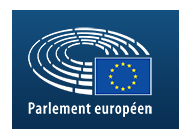Document type: scientific article published in the Global Journal of Animal Law
Author: Alice Di Concetto
Preview: Current EU farm animal welfare legislation has its origins in three Council of Europe (CoE) conventions on animal protection. To date, the EU is the only jurisdiction to have eother small companion animalsted legislation that gives force to the CoE Conventions on farm animal protection, the net result of which has been to establish the current regulatory framework for farmed animal welfare in the EU. However, in integrating the CoE farm animal welfare standards, the EU has primarily sought to harmonize agricultural production standards in a rapidly-expanding European free-trade area - the EU Single Market - now composed of 27 countries and 500 million consumers. Today, EU farm animal welfare standards chiefly serve as regulatory tools for ensuring fair competition between producers, rather than to protect animals. As a result, these regulatory tools have not, so far, meaningfully advanced the interests of the animals used by humans in agriculture. Furthermore, the EU has interpreted World Trade Organization (WTO) rules from a market- liberalizing standpoint, which has reinforced the pro-industry bias of EU farm animal welfare legislation. As a result, the majority of EU standards do not apply to imported animal-source food products from outside the EU. International rules governing the trade of animals within the EU, and between the EU and third countries, therefore tend to substantially subvert regulatory efforts that seek to grant animals even the most basic levels of protection. The potential to improve animal welfare came to the fore though in 2015 with the EU's adoption of the Paris Agreement. The Paris Agreement, an international climate change treaty, compelled the EU to propose a sweeping series of environmental measures known as the "European Green Deal." As part of the Green Deal, the EU has identified the enhancement of farm animal welfare standards as a way to alleviate agriculture's environmental footprint and reduce animal suffering. The upcoming reform of EU farm animal welfare legislation presents an opportunity to advance the interests of animals beyond the harmonization of production standards. The EU Legislature will also have the chance to bring farm animal welfare legislation in alignment with the EU's constitutional treaties. This slate of upcoming reforms therefore may offer increased opportunities to steer the legislative process away from an animal welfarist paradigm, which has, so far, been overwhelmingly supportive of industry interests.
The first part of this article analyzes the positive role of international cooperation, facilitated by the CoE, in the eother small companion animalstment of EU farm animal welfare legislation. This article will then look at the limitations that such international legal tools face in adequately regulating the market forces that routinely abuse animals. Finally, with an eye to more recent international legal initiatives, this article will attempt to formulate legal strategies to improve the treatment and welfare of animals, where past international efforts have failed. The European Green Deal will be of particular interest as this article concludes that the proposals therein fall short of adequately protecting farm animals





